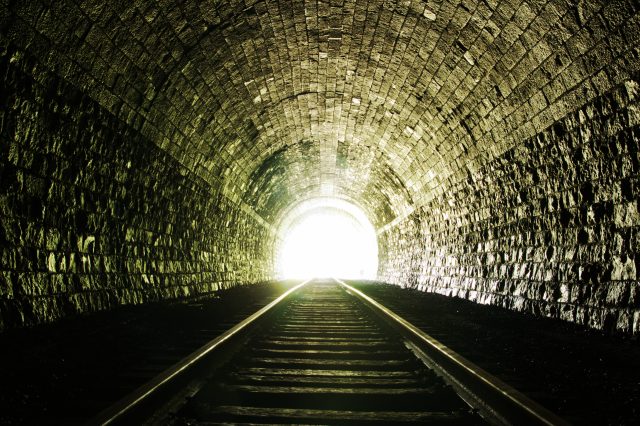OIV offers hope despite global wine market at lowest levels since 1961
On 15 April, the OIV press conference took place to discuss the most pressing challenges facing the wine sector. DB summarised the key takeaways from the discussion. The post OIV offers hope despite global wine market at lowest levels since 1961 appeared first on The Drinks Business.

 In a period when the narrative surrounding the wine market has been relentlessly negative, the 15 April OIV press conference provided a refreshing dose of hope and direction. OIV director general John Barker addressed the pressing challenges in three main areas:
In a period when the narrative surrounding the wine market has been relentlessly negative, the 15 April OIV press conference provided a refreshing dose of hope and direction. OIV director general John Barker addressed the pressing challenges in three main areas:
- Global Wine Production
- Global Wine Consumption
- Global Wine Trade
After a detailed walk-through of the data, Barker concluded by offering clear opportunities in each sector, signalling a way forward for an industry under pressure.
Global wine production
Global production remains in the spotlight. In 2024, wine production fell to 226 million hectolitres - the lowest level since 1961. Barker pointed to unprecedented weather events, and the intensifying impacts of climate change as key drivers behind this decline. The data reveals stark figures: while the world faces this downturn, major producing regions are also seeing significant percentage drops.- In France, production fell by 24%.
- Spain experienced a 17% drop, while
- South Africa recorded a 16% decline.
Global wine consumption
The consumption landscape mirrors production woes. Global wine consumption slid to 214 million hectolitres in 2024, marking the lowest level since 1961. Over the past 60 years, wine drinking habits have converged, with traditional heavy-drinking regions in Europe and South America moderating their numbers, Barker explained. In contrast, emerging markets have grown, though not enough to counterbalance downturns in key growth markets like the USA and China.
Economic headwinds, notably the lingering impact of post-COVID inflation, rising production costs, and decreasing purchasing power, have all taken their toll. Barker said:
“For consumption, over the past 60 years we have observed a gradual phenomenon of convergence in terms of wine drinking habits. The large traditional wine countries of Europe and South America have progressively moderated their consumption, while the popularity of wine has steadily grown in other countries. The key shift has been the downturn in the major growth markets, particularly the USA and China [on top of moderation seen in traditional wine countries]. Economic factors are an important driver here. The lingering effects of post COVID inflation, increasing production costs while decreasing purchasing power are still being felt. The current geopolitical uncertainty exacerbates this situation."
He continued: "These economic factors intersect with changing consumer behaviours, from changing generations and lifestyles, and rapidly expanding range of options and alternatives.”
Yet, Barker found optimism in the evolving consumer profile: “The opportunity here is to understand the new consumer. Quality, authenticity, and heritage, but the sector cannot rely on these qualities alone. Seeing wine through the consumers eyes and communicating on their terms is critical. This is what the wine sector must do to renew its growth.”
This data and commentary suggest that while traditional markets may be cooling off, there is significant potential in re-engaging consumers with modern, dynamic messaging that resonates with their lifestyles and values.
Global wine trade
The trade sector paints a more encouraging picture. In 2024, global wine export volumes held steady at 99.8 million hectolitres, with export value reaching EU€35.9 billion - the third-highest ever recorded. Premiumisation is evident, as the average export price climbed to €3.60 per litre, boosted by a 30% increase since 2020. Notably, bulk wine stands out, with volume up 3.3% and value rising 9.8% year-on-year.
Barker addressed the existing uncertainties looming over trade: “With regard to trade, the 2024 data is encouraging, but we know there are headwinds to come. Wherever the tariff rates finally land for OIV member countries, the uncertainty that has been created has already affected many businesses. Trade today is the lifeblood of the sector, with every one in two bottles being consumed outside its country of origin. International trade in wine is much more than a simple economic transaction. It is a cultural exchange, an exchange of knowledge, and a spur to cross-border investment."
He furthered: "Trade is the opportunity, and that opportunity depends on the stability and mutuality that international institutions provide. The OIV is a part of this system, providing information and promoting cooperation and harmonisation to support its members and the international wine sector.”
While headwinds such as US tariff proposals loom, Barker’s remarks underscore that trade remains a vital engine for growth. He highlighted that stability, coordinated international policies, and mutual cooperation are essential to sustaining this cultural and economic exchange.










































































































































































